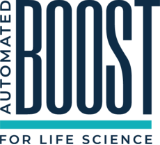Frequently Asked Questions
Boost is no-code test automation built for Life Science. It’s good for quality, and good for business. Because of the heavily regulated nature of the Life Science industry, we get a lot of questions about Boost. We hope you’ll find the answers you’re looking for here. If not – get in touch!
Does Boost need to be validated?
According to the GAMP® Good Practice Guide: A Risk-Based Approach To Testing of GxP Systems, Commercial or established tools are considered to be GAMP® Software Category 1 and usually have a low impact on product quality or patient safety; therefore, they are considered to have a low risk priority and do not typically need to be validated. (From ISPE GAMP Good Practice Guide, Second Edition, page 175.)
Can Boost test a process with multiple users and applications?
Other automated test tools are designed specifically to test one application. But that’s not how your real business processes work. They may start in one system and then move through other systems on different platforms before completion. Boost can handle your real-world business processes across different systems, with multiple users – all in one tool.
Does Boost require coding skills?
No – Boost doesn’t require coding skills or developers to write test scripts.
Users can easily record their own test scripts through a simple capture and reply utility. This includes scripting capabilities, parameterization and can simulate user input and securely capture results.
How do I know if Boost will work with my application?
Boost works with Veeva, TraceLink, Office 365, Dynamics 365, SAP S/4HANA, and many more applications.
If you’re unsure whether Boost works with your application, get in touch with our team ([email protected]). We’ll check out your test framework to see if there are gaps to fill before getting started. And, we’ll drill down into the specific application you want to test to see if specific rules are needed. Then – you’ll have all the info you need to get started.
Can Boost perform negative tests, regression tests, stress tests?
Yes, Boost handles all these scenarios, and makes it practical and cost effective to stay in control of updates, patches and changes. Check out our Video page to see how these scenarios work.
Does Boost have any hardware or software requirements?
No – There’s no hardware required to use Boost. It uses a Software as a Service (SaaS) setup.
Does Boost integrate to various applications? How does this work, and is there a limit to the number of integrations?
Yes, Boost generally integrates to all browser-based applications through a proxy server without any need for installation or add-ons. There is no limit to the number of integrations from a technical perspective.
Will Boost run in all iOs, Android and Apple browsers?
No. At this time, Boost does not support mobile devices.
Does Boost only work with cloud solutions?
No. Automated Boost works with on-premise systems, as long as they are browser based. It works via a VPN or specific firewall ports.
Will the test script fail or time out if the browser shuts down or doesn't respond?
Yes. If the browser shuts down or doesn’t respond, the script will be marked Terminated. Automated Boost can execute tests in background mode to avoid such issues.
Can you push your tests to an updated application and view the delta?
Yes, Automated Boost can record processes from one application and execute them on another, or an updated version of the same application. You can compare the execution results.
Can a script be locked?
Yes. Boost allows you to manage a script’s status. An approved script may not be modified.
benefits of automated boost

Improve Quality
Faster and more frequent execution finds more defects, earlier. And the results are always precise – not subject to human failure.

Reduce Time and Cost
Faster, automated execution lets you run more tests (even unattended) in more situations. For example, run a complete suite of regression tests on every system patch or upgrade. You only evaluate the exceptions.

Increase Agility
Test more frequently, reduce risk, stay compliant, and support the overall validation process. Handle minor upgrades, frequent critical updates and system changes coming from all over your organization.

Broaden Test Scope
A broader set of test data used in repetitive automated testing makes it easier to execute multiple test iterations using different data sets. Cover more data permutations then possible when doing manual test.

Enable Real Stress Test
It’s impractical to test applications under load, manually with real users. Boost allows stress testing of your system, repeatably against a large number of virtual users.

